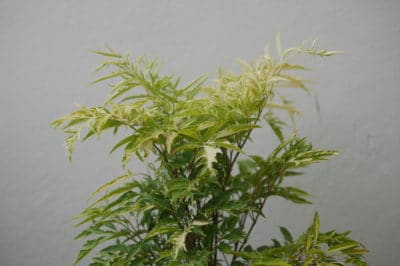Ming aralias belong to a group of houseplants grown for their shrubby foliage and colorful leaves. Aralias range in size from tabletop plants to eight feet in height. Some are also grown as bonsai specimens. They are relatively easy to grow and manage indoors, and can also be grown outdoors in USDA Zones 10 and 11.
About Aralias
Types of Aralias
The aralia group includes a number of other kinds of plants. Among these are:
- Celery leaf or chicken gizzard aralia – columnar plant with lobed leaves.
- Fabian aralia or plum aralia – leaves deep maroon to purple on underside.
- Aralia Balfour – dark green, waxy, lobed leaves with very upright growth habit. Variety Marginata has variegated leaves.
- Aralia Crispata – plants covered with lime-green leaves.
Why Is It Called A “Stump?”
The word stump has to do with the height of the plant. The origin of the term is unknown. Ming aralias do have stems that can look like tree trunks. When used for bonsai, the plant is often pruned to look like a tree with a main trunk and twisted branches. Larger aralias are usually grown as medium-sized shrubs with straight branches.
Light Requirements
In the wild, ming aralia grows below a canopy of higher trees. It needs bright, indirect light and can tolerate morning sun when grown outdoors. Indoors, however, it should not be place in areas of full sun near a window. A north window or a window with filtered light from a translucent shade or blind are best indoors. Avoid a full south exposure unless the window has overhanging trees for dappled shade.
Soil and Water
Aralias like a rich, acidic soil with a pH of 7.9 to 8.5. The soil should be loose and drain well, as the plant can’t handle waterlogged soil. It should be watered deeply with room temperature water and allowed to drain completely. Don’t allow water to stand in the saucer below an aralia plant.
Fertilizing Ming Aralia
Ming aralias are active growers from early spring to late fall. At that point they enter a semi-dormant state and may drop leaves. During the period of active growth, they benefit from fertilization. Use a water-soluble organic fertilizer with an NPK ratio of 24-8-16. In most cases, use one-half tablespoon of fertilizer to one gallon of water and use the solution instead of watering the plant.
